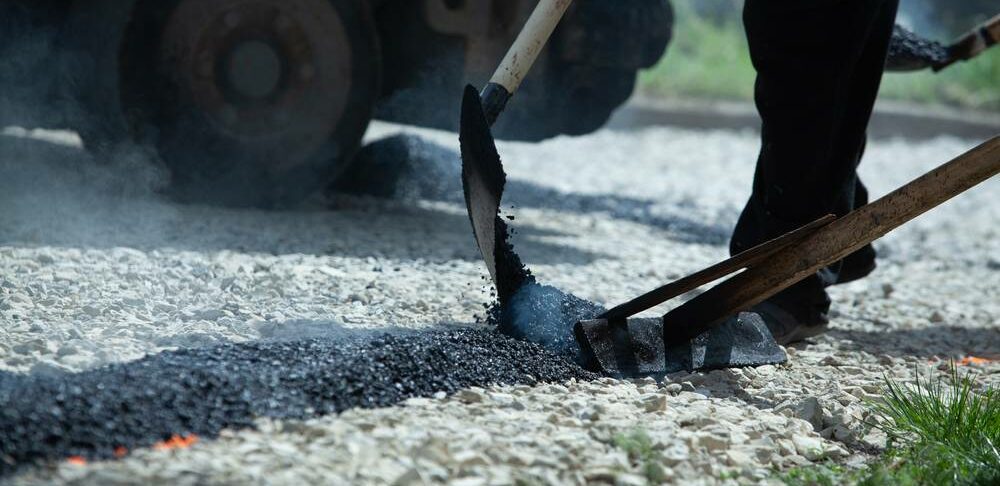Public works managers and road personnel dread potholes, trench cuttings, and other repairs. They’re everywhere, are expensive, and take a long time to fix. They also cause traffic congestion and threaten bikers, cars, skaters, trucks, and pedestrians. However, municipal, county, and state governments may save a ton of time, labor, and material in these repairs thanks to infrared asphalt repair technology. It is now faster, and cost-saving to fix dangerous potholes, failed utility cuts, alligator cracking, and other surface defects that affect their asphalt roadways and parking spaces all year.
What Is Infrared Asphalt Repair?
The infrared technique involves heating in-place asphalt using an infrared heating unit to soften it to a workable state, then adding fresh asphalt that blends perfectly with the old. Pothole repair is the most well-known application of the technique.
The old saw cut approach involves cutting out a square of damaged asphalt, removing it, and replacing it with new asphalt. However, the infrared method removes the seams that quickly deteriorate such patches.
As a result, the feathered joining of the new patch material to the surrounding pavement is a significant benefit – no seams, no water infiltration. Rainwater can seep via saw cuts seams, causing moisture and thaw damage to the patch. Every year, you must redo several of these patches.
Infrared Asphalt Repair and Government Entity Use
Infrared isn’t simply for fixing potholes; it may also be used for a range of other tasks. The fascinating applications of the infrared process are found in asphalt stamping and patterned surfaces, and thermoplastics for decorative projects.
Utility joint repairs, maintenance holes, complex drainage regions, high spots, catch basins, and grade control are suitable for infrared treatment.
Here are some uses of infrared asphalt repair;
- Patch potholes
- Fix birdbaths
- Repair utility cuts
- Adjust asphalt around utility holes and valve boxes
- Repair paver seams
- Create welded joints in patches or new paving
- Repair minor surface imperfections
- Oil spot removal
- Wide crack repair
- Bonding speed bumps to the existing surface
- Creating rumble strips
How Infrared Asphalt Repair Saves Money
Excellent Repair
Infrared technology also allows for superior road, parking lot, and driveway repairs at a cost up to two-thirds less than traditional approaches.
The infrared technology speeds up the repair process by heating, fusing, and compacting recycled asphalt. It saves time, money, and new material.
The infrared system improves operations by lowering repair time and allowing more significant surface areas to be repaired. It also performs better than simply patching a pothole or alligator crack with new asphalt.
Technology That Saves Money
The road crew can load up a few tons of asphalt and work all day using infrared asphalt fixing technology. The infrared repair technique saves time and allows the team to recycle much of the old asphalt, lowering material costs.
In the past, you’d bring four or five tons to the streets. However, thanks to recycling, you only take out roughly 1.5 to 2 tons at most. That’s because most of the asphalt that’s being fixed can be rejuvenated and reused.
Awareness in the Community
While public safety from road dangers is always a top issue, many local governments, particularly self-insured ones, may also be concerned about liability claims.
The infrared device has been beneficial in quickly repairing potholes and fissures. You place the heater on it, let it heat for a bit, and then resurface and seal it to regenerate most of the old asphalt. When you’re through, the road surface will be almost as good as new.
Once the new asphalt repair has had time to bleach, it closely resembles the original surface, making it difficult to spot the restoration.
Benefits of Infrared Asphalt Repair Technology
The infrared asphalt reclaiming and restoration system is suitable for fixing all types of general asphalt defects permanently. Examples of these defects include;
- Potholes
- Utility cuts
- Surface cracking, pits
- Utility holes
- Birdbaths
In comparison to typical cut-and-remove asphalt repair, infrared asphalt systems are substantially more efficient in operation. With its stainless steel and inconel converters, the infrared pavement-heating panel generates infrared radiation that softens the asphalt pavement without hurting it 2 to 2.5 inches deep.
The average time is less than seven minutes. The reclaimer in the system keeps asphalt at plant mix temperature in all weather and can even reclaim stockpiled asphalt.
Using an infrared asphalt repair saves on labor and repair time, as well as materials. Infrared repairs bond to the existing pavement, resulting in a seamless finish.
Because the seams have been removed, there is no need to tack-coat the edges, improve durability, and open roads to traffic immediately. And because old asphalt is recycled, crew sizes are limited to two, and one truck is required, the repair operation is also less expensive.
The infrared systems have become very popular among independent contractors that work for state and local governments.
Final Thoughts
Infrared asphalt repair is a cost-effective and timesaving method. Unlike traditional crack-filler asphalt repair processes, it provides no gaps for water and ice to permeate. Instead, its infrared repairs blend in with the original pavement, resulting in a seamless surface. You may have a smooth and safe blacktop in no time if the simple step-by-step technique is followed correctly.
As more government entities opt for infrared asphalt repair, don’t lose out on your chance to save time, money, and resources on your critical maintenance.
Contact Richfield Blacktop today and learn more about infrared asphalt repair technology and how Government entities can use it to save time, money, and resources.




